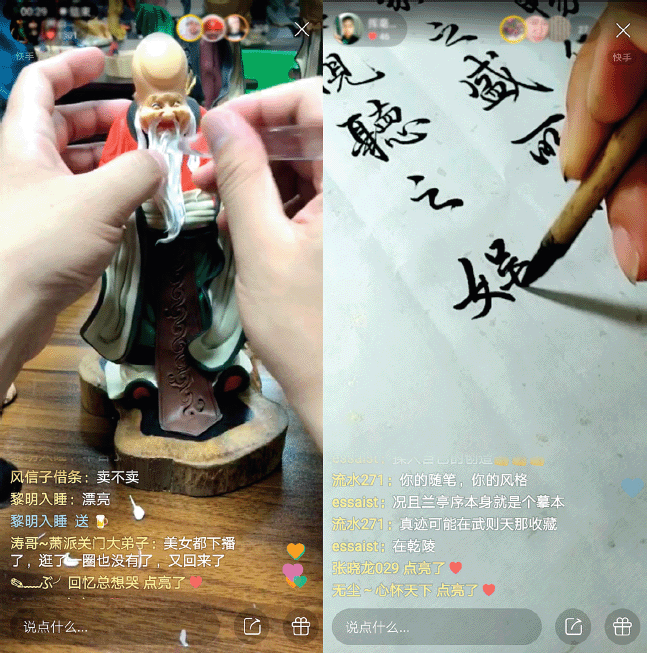Chinese live-streaming services have been gaining traction in China in recent years, even more so than their European and North American counterparts, such as Twitch.tv, Facebook Live, and YouTube Live. More than half the Internet users in China regularly use live-streaming services such as Douyu, Huya, YY, Kuaishou, Douyin, and Bilibili. Due to its growing popularity, live streaming has even become a profession in China. Professional streamers can make a living from streaming: Dedicated viewers purchase virtual gifts for them, and other support includes training or promotion from streamer guilds and agencies. This article summarizes results from my previous studies on live streaming in China that highlight how live streamers in China are providing content not only for entertainment, but also for knowledge sharing and cultural heritage preservation. We highlight streamer and viewer motivations, streaming practices, and the challenges currently facing streamers. We believe that lessons learned from live streaming in China can provide a blueprint for the future of live-streaming services in other countries.
According to a mixed-method study we conducted that included a survey and interviews with regular live-streaming users, besides video gaming and performance live streams, live streams about sharing and acquiring knowledge are among the most popular and engaging genres in China. These live streams differ from the Ask Me Anything—style ones on Twitch in that they are more like lectures or training sessions, where the streamer talks about the topic, demonstrating the procedure or showing essential information using slides or a whiteboard. Most streamers of this genre also seek to provide daily or weekly streams. They are often considered to be experts, even though they might be unaffiliated with traditional formal learning institutions. One representative subcategory of such live streams is traditional cultural art forms and artifacts, often called intangible cultural heritage (ICH)—for example, Chinese calligraphy and dough figurines.
Since 2017, some people in China have begun to use live streaming to showcase and promote ICH. These streamers are typically practitioners of ICH and may even come from rural areas. Most of them use mobile phones to stream due to its convenience.
Knowledge-sharing live streamers have several motivations. Those who share formal knowledge through live streaming are mainly motivated to complement the current education system, stating that they want to provide equal access to knowledge for students from universities that have limited resources. They also want to have a positive impact on young people’s lives, believing that live-streaming platforms are the most convenient place to reach large numbers of young people. In the case of ICH live streamers, they want to engage young viewers as much as possible, as the hope for safeguarding ICH practices rests with this population. With live streaming, streamers can promote ICH on a large scale without geographical constraints.
Knowledge-sharing live streamers also stream to socialize, as live streaming provides them more chances to communicate with people with whom they may not otherwise have the chance to speak. With live streaming, streamers have a direct channel to those outside their social circles, so that their knowledge can reach a broader audience.
They also stream for self-improvement. Encountering people from diverse backgrounds allows them to see how different people react to their content and enables them to draw inspiration from their conversations. Those viewers who are experts can help streamers hone their own skills. Further, to engage and impress viewers during their live streams, some streamers make great efforts to practice and sharpen both their speaking and skills, which in turn gives them a sense of self-fulfillment.
Analysis:
Live stream provide new opportunities for promoting the culture heritage. But how the make the device and other technologies accessible for the craftsman is a problem.




